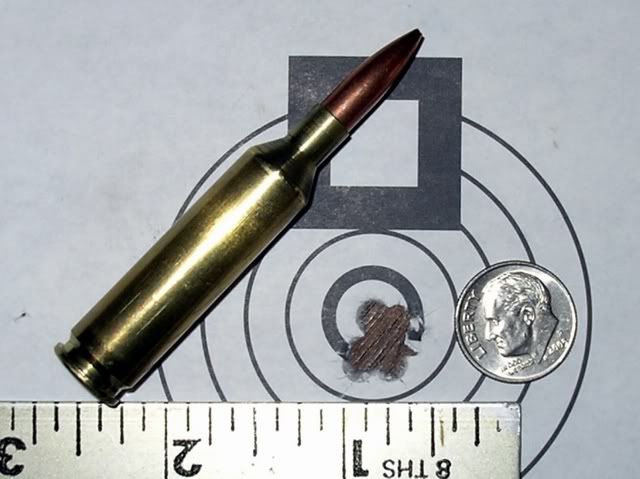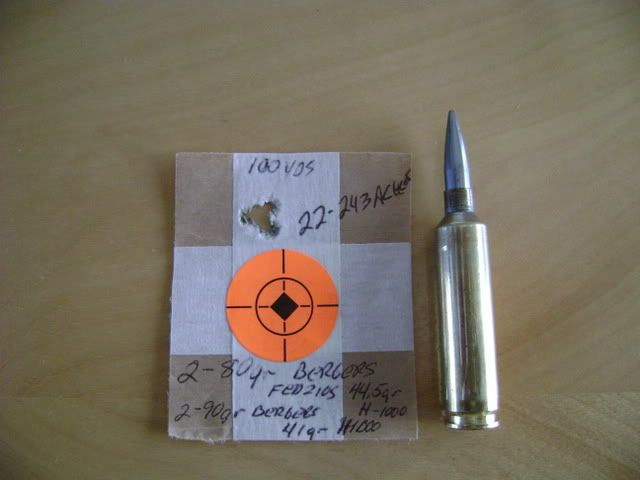I've always owned factory rifles chambered for factory cartridges, for which I reload using published data from powder and bullet manufacturers.
I recently adopted an old FN (1951) Mauser, rebarreled and chambered for a wildcat cartridge......namely .22-243 Winchester. This wildcat is simply a .243 win necked down to .22 (.224). Same shoulder angle same length as a .243win.
So therefore there is no published load data excepting that posted by individuals. and that's rare, and questionable.
Now then, I bought a set of Redding Full Length Dies for this caliber (yes they make one....so does RCBS), and I sized a few. Then I cut some closed-cell foam circles and filled the primer pockets tight enough to hold water, filled them with water and weighed both empty and water filled cases.
I even have some LC 1968 cases that I necked down to .243 years ago and decided to neck a few of these also down to .22-243, and weigh.
So here's the average results:
Federal cases hold 53.8 grains of water
LC 1968 cases hold 51.2 grains of water
Now looking at a published list of factory cartridge volumes I discovered that .223 WSSM hold 53 grains of H20 on average.
So here's my question: Wouldn't it be reasonable to use published Hodgden start loads for .223 WSSM for this wildcat cartridge and work up? Or am I missing something important!! (of course less for the thicker LC brass perhaps .220 swift data since they hold 48 grains of H2O). I plan to start with 55 grain bullets. Barrel twist is 1-14.
(of course less for the thicker LC brass perhaps .220 swift data since they hold 48 grains of H2O). I plan to start with 55 grain bullets. Barrel twist is 1-14.
This ought to be a real laser of a rifle. Yes, a barrel burner if one gets carried away, just like the .223 WSSM. What's the thinking here? I want to be safe.
I recently adopted an old FN (1951) Mauser, rebarreled and chambered for a wildcat cartridge......namely .22-243 Winchester. This wildcat is simply a .243 win necked down to .22 (.224). Same shoulder angle same length as a .243win.
So therefore there is no published load data excepting that posted by individuals. and that's rare, and questionable.
Now then, I bought a set of Redding Full Length Dies for this caliber (yes they make one....so does RCBS), and I sized a few. Then I cut some closed-cell foam circles and filled the primer pockets tight enough to hold water, filled them with water and weighed both empty and water filled cases.
I even have some LC 1968 cases that I necked down to .243 years ago and decided to neck a few of these also down to .22-243, and weigh.
So here's the average results:
Federal cases hold 53.8 grains of water
LC 1968 cases hold 51.2 grains of water
Now looking at a published list of factory cartridge volumes I discovered that .223 WSSM hold 53 grains of H20 on average.
So here's my question: Wouldn't it be reasonable to use published Hodgden start loads for .223 WSSM for this wildcat cartridge and work up? Or am I missing something important!!
This ought to be a real laser of a rifle. Yes, a barrel burner if one gets carried away, just like the .223 WSSM. What's the thinking here? I want to be safe.
Last edited:



